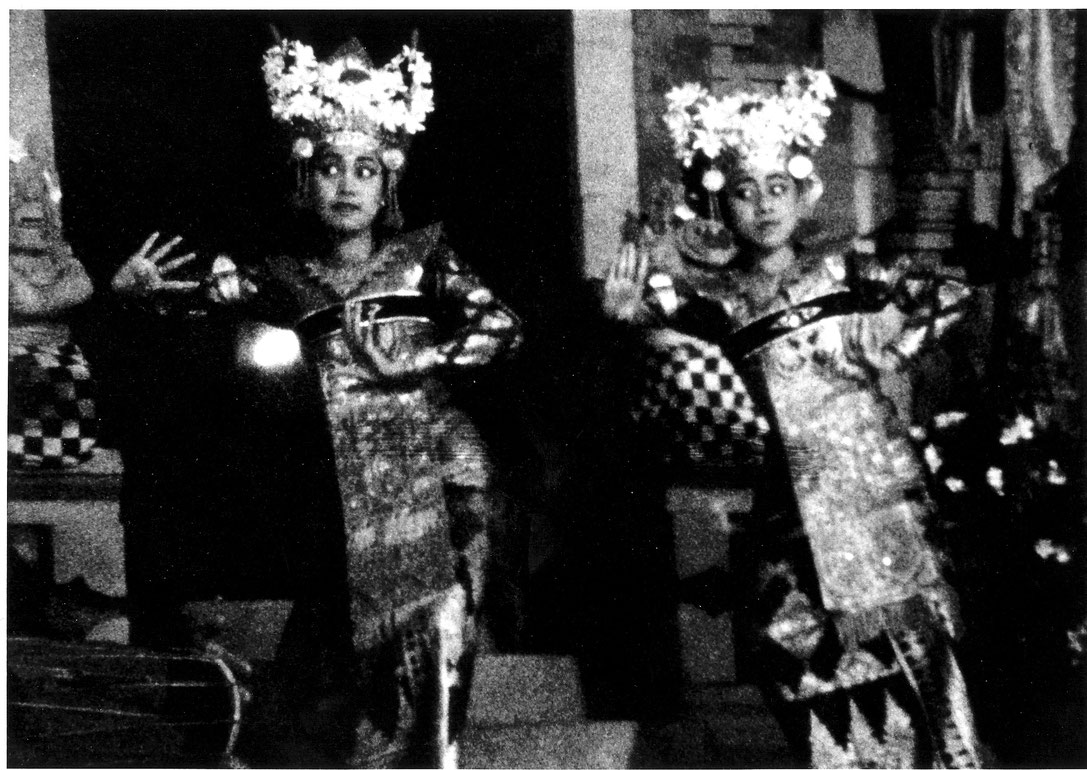Bali Mécanique
Accepting the speed of contemporary life and an exponentially increasing mass of information moving at a constantly accelerating velocity as given, Henry Hills composes films which present models of concentration, condensing masses of imagery to their essential moments and radically juxtaposing these to create pathways for thought. Rapid editing as generally employed in the mass media presents a mindless profusion of trivialities whose function is to lull the viewer into a semihypnotic state of receptivity. By contrast, Hills´ work demands (and creates the conditions for) intensely directed attention. Rhythmically complex and varied, his films probe the depths of the topics at hand and in doing so expose new ways of seeing, educating the eye for a more critical viewing of the immense flow of images with which we are daily assaulted and suggesting fresh approaches to looking at the world at large. Closely allied to new developments in music, dance, and poetry, Hills´ work remains fresh over the years. Films he made over a decade ago seem new today. Their ready accessibility belies their extreme density, which encourages and rewards multiple viewings.
A self-reflective study of the dance and rhythms of life in Bali, Bali Mécanique presents a luscious spectacle for the eye and a momentary vision of paradise for the soul. The casual documentary-style cinematography combines with an intricate jigsaw-puzzle-style of music-driven editing to create for the viewer a feeling of being in the center of the action. The first section presents a complete Legong dance, intercutting performances of three popular Peliatan dance companies with footage of sacred architecture and several Odalan temple celebrations (at Ubud, Pejeng, Duda, Tegeskawan and Penestanan). Perhaps the most popular dance in Bali, the Legong is always performed by three young girls, two dressed identically in green representing King Lasem and Princess Rankesari whom he has abducted and is attempting to seduce, and the third dressed in red opening the dance as a servant, the Condong, and later reappearing as a Garuda to unsuccessfully warn Lasem of his imminent downfall and death unless he ceases his misdeeds (which his arrogance prevents him from doing), all to the precise accompaniment of a full gamelan orchestra.
The dance is in four parts, each with substantially different (though internally repetitive) musical accompaniment:
1) the dance of the Condong: the longest section begins as an extended solo, changes rhythm with the entry of the two legongs, and culminates in her handing them each a fan;
2) the Bapang: an angry fan dance, with the legongs moving "like twin breasts," ending with the Condong´s exit;
3) the Penipoek: an increasingly erotic duo, which abruptly terminates with Rankesari rebuffing Lasem and escaping;
4) the unheeded and unappreciated warning of the Garuda: here the film, in which other imagery has been intercut to emphasize and elucidate the structure of the music (and the manner in which the rhythms of life and celebration in Bali inform the rhythms of their music), builds to an increasingly frenetic collage as the dance reaches its crescendo.
(Taken from: henryhills.com)
Bali Mécanique
1992
USA
11 min

